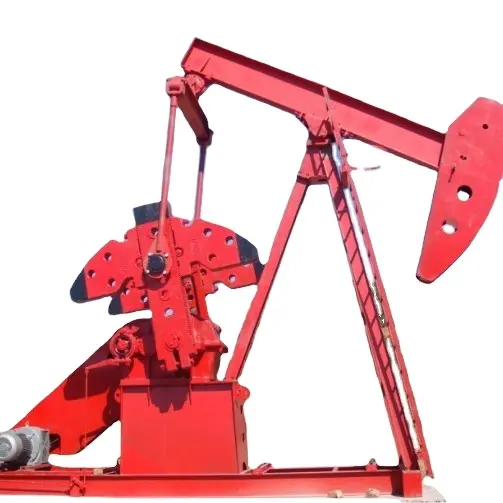How Does A Pumping Unit Work?
Home » How Does A Pumping Unit Work?
Add Your Heading Text Here
A pumping unit, often referred to as a pumpjack, is a mechanical device used in the oil and gas industry to extract crude oil from a well. It operates on the principle of reciprocating motion and is commonly seen in oil fields.

Principle of operation of a pumping unit
Prime mover: A pumping unit is usually driven by an external energy source, usually an electric motor or internal combustion engine. This provides the initial energy required to operate the unit.
Counterweight: The pumping unit consists of a series of beams and rods connected to a central pivot point. Counterweights are fitted to one side of the unit. These counterweights help to balance the load and reduce the strain on the motor or engine.
Horsehead: The horsehead is the part of the unit that moves up and down. It is attached to the travelling beam, which is a narrow beam that rotates around a central point. The horse head is connected to the polishing rod.
POLISHING ROD: The polishing rod is a long, thin rod that connects the horsehead to the downhole pump. It moves up and down with the movement of the pump.
Downhole Pump: This is a component located deep in the wellbore. Its purpose is to lift the oil to the surface. There are various types of pumps used, such as rod pumps, pumping rod pumps, etc.
Rod String: A rod string is a series of connected rods that extend from the surface into the wellbore in a downhole pump. It transmits the reciprocating motion of the pumping unit to the pump.
Wellhead and Tubing: The wellhead is a structure located at the top of the well casing. It is the connection point for the tubing string, which is the pipe that allows the oil to flow to the surface.
Here's how it operates
- The motor or engine powers the unit, which initiates the reciprocating motion.
- As the horsehead moves up, it pulls the polished rod and the attached rod string upwards. This lifts the downhole pump.
- When the horsehead reaches the top of its motion, it reverses direction and starts moving back down.
- As the horsehead descends, it pushes the polished rod and the attached rod string back down, pushing the downhole pump back into the wellbore.
- This reciprocating motion creates a pumping action, drawing oil from the well and bringing it to the surface.
The extracted oil is then processed and transported for further refining.
It’s important to note that while this is a simplified explanation, there are many variations and configurations of pumping units, and the specifics can vary depending on factors like well depth, pump type, and the characteristics of the reservoir.
